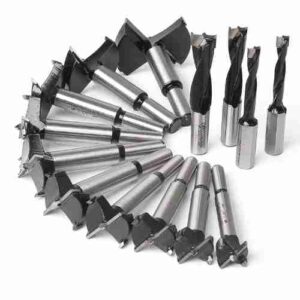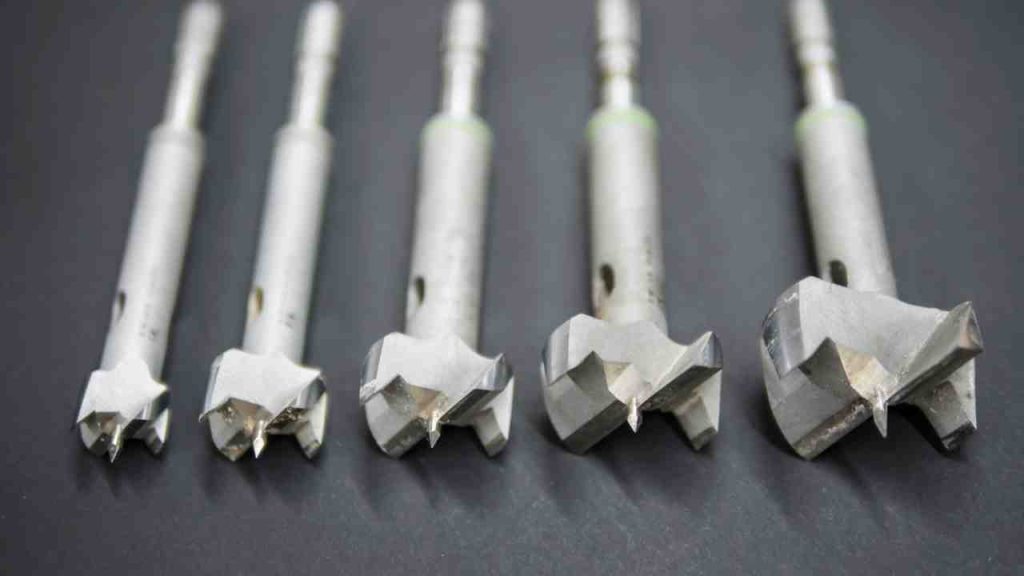You’ve undoubtedly heard of a Forstner bit if you’re into woodworking. These specialty drill bits are intended to drill clean-edged flat-bottomed holes, making them excellent for furniture-building, cabinetry, and other precision woodworking jobs. Many woodworkers, however, think that a drill press is required to utilize Forstner bits since they demand a steady and regulated drilling surface.
A drill press is unquestionably the ideal instrument but is not always accessible or practicable. If you don’t have access to a drill press or need to operate in a confined place, a Forstner bit may still be used with a hand drill. In this blog article, we’ll guide you through using a Forstner bit without a drill press, including the equipment and supplies needed and advice for success.
 Can you use a Forstner bit without a drill press?
Can you use a Forstner bit without a drill press?
Yes, a Forstner bit may be used without a drill press. Although a drill press is the best tool for employing Forstner bits, a hand drill may also be utilized. To prevent the workpiece sliding while drilling, ensure it is firmly fastened to a sturdy surface.
How to use a Forstner bit without a drill press? 6 steps
Tools and materials required:
- Forstner bit: You’ll need a Forstner bit that’s the correct size for the hole you want to drill. Forstner bits are available in various sizes, so be sure you have the proper one for the job.
- Hand drill: The next necessary gear is a portable power drill. Make sure it has changeable speed settings and is powerful enough to handle the size of the bit you’re using.
- Clamps: To prevent your workpiece from shifting while drilling, anchor it to a sturdy platform using clamps. Clamps should be used to attach your workpiece to a workbench or other sturdy surface.
- Measuring tape: Since precision is essential when using a Forstner bit, keep a measuring tape on hand to guarantee proper hole placement.
Step-by-step instructions:
- Choose the suitable Forstner bit: Pick a Forstner bit appropriate for the hole size you wish to drill.
- Mark the location: Using a measuring tape, mark where you wish to drill the hole. Mark the middle of the hole with a pencil.
- Secure the workpiece: Using clamps, attach the workpiece to a firm surface, such as a workbench or table. Check that the workpiece is level and will not shift during drilling.
- Adjust the hand drill: Set the hand drill to the proper speed for the bit size. The slower the speed, the bigger the bit.
- Begin drilling: Put the tip of the Forstner bit on the specified place and begin drilling slowly and steadily. To ensure a clean hole, use light pressure on the drill and maintain it perpendicular to the workpiece.
- Clean the bit: Remove the bit from the hole regularly and clear off any accumulated debris on the bit. This will contribute to a more accurate and smooth drilling procedure.
Tips for using a Forstner bit without a drill press:
- Employ the proper speed: With bigger Forstner bits, use a slower speed setting on your hand drill to avoid overheating and to create a clean and accurate hole. Smaller Forstner bits benefit from a higher speed setting.
- Take breaks: While drilling with a Forstner bit may be time-consuming and exhausting, rest to avoid weariness and safeguard your safety.
- Clean the bit frequently: To maintain a smooth and accurate drilling operation, clean the bit after every few passes. Built-up junk may cause the bit to overheat, making drilling clean holes difficult.
- Drill a pilot hole: Make a pilot hole with a smaller drill bit before drilling with a bigger Forstner bit. This will aid in guiding the Forstner bit and provide a clean, accurate hole.
What speed should you run a Forstner bit?
The speed at which you should drill with a Forstner bit is determined by the size of the bit and the substance you’re drilling into. Larger Forstner bits generally need slower speeds to avoid overheating and provide a clean and accurate hole. Following are some general Forstner bit speed guidelines:
- For bits with a diameter of 1 inch (25mm) or less, use a speed of 1500 to 2000 RPM (revolutions per minute).
- For bits with a diameter of 1 to 2 inches (25 to 50mm), use a 1000 to 1500 RPM speed.
- Use a speed of 500 to 1000 RPM for bits bigger than 2 inches (50mm) in diameter.
Why is my Forstner bit burning wood?
- Excessive speed: Excessive speed might cause a Forstner bit to overheat and burn the wood. Check that the bit is going at the correct speed for the size of the bit and the material you’re drilling into.
- A dull Forstner bit may produce excessive friction and heat, resulting in wood burning. Before using your bit, ensure it is sharp and in excellent shape.
- Inadequate pressure: Forstner bits need greater pressure than other bits to function properly. The bit will overheat and burn the wood if you don’t use enough pressure while drilling.
- Improper angle: Ensure the Forstner bit is perpendicular to the workpiece during drilling. An angled bit might result in uneven cutting and scorching of the wood.
- Low-quality wood: Certain woods, such as pine or maple, burn more easily than others. It may be more difficult to avoid burning when drilling into low-quality or excessively porous wood.
Frequently Asked Questions (FAQs)
Can I use a Forstner bit with a cordless hand drill?
Yes, you can use a Forstner bit with a cordless hand drill. However, make sure your cordless drill has adjustable speed settings and sufficient power to handle the size of the Forstner bit you are using.
How can I prevent my Forstner bit from slipping in the drill chuck?
To prevent your Forstner bit from slipping in the drill chuck, make sure the chuck is clean and free of debris. Tighten the chuck securely around the shank of the Forstner bit, ensuring it is properly seated and centered.
Do I need to apply any lubricant or cutting oil when using a Forstner bit?
Generally, you do not need to apply lubricant or cutting oil when using a Forstner bit on wood. However, if you are drilling into hardwood or experiencing excessive heat buildup, you may consider using a small amount of cutting oil or beeswax to reduce friction and heat.
How do I sharpen a Forstner bit?
Sharpening a Forstner bit requires a fine-grit diamond file or sharpening stone. Carefully file the cutting edges and the inside of the chip-clearing flutes to restore sharpness. Be cautious not to alter the cutting angle or remove too much material, as this can affect the performance of the bit.
Can I use a Forstner bit to drill into materials other than wood?
Forstner bits are primarily designed for woodworking, but they can be used to drill into other soft materials like plastic or soft metals (e.g., aluminum or brass) with caution. Ensure you use the correct speed settings and take breaks to prevent overheating. However, for harder materials like steel or concrete, it is best to use bits specifically designed for those materials.
Last words:
Although a drill press is the best tool for employing Forstner bits, it isn’t always accessible or practical. Hand drilling might be feasible if you have the right gear and follow suitable practices. With a Forstner bit, you may make accurate and clean holes by selecting the proper bit, marking the area, fastening the workpiece, adjusting the hand drill, and drilling slowly and steadily.
To avoid burning or other concerns, take pauses, clean the bit regularly, use the optimum speed, and apply adequate pressure.

Following these tips and practices, you may use a Forstner bit without a drill press to obtain the required results in your woodworking projects. Keep safety in mind, take your time, and enjoy the process of making something beautiful and practical.
- Where are WEN drill presses made? - April 2, 2023
- Where are Rikon drill presses made? - April 1, 2023
- Where are Powermatic drill presses made? - April 1, 2023






